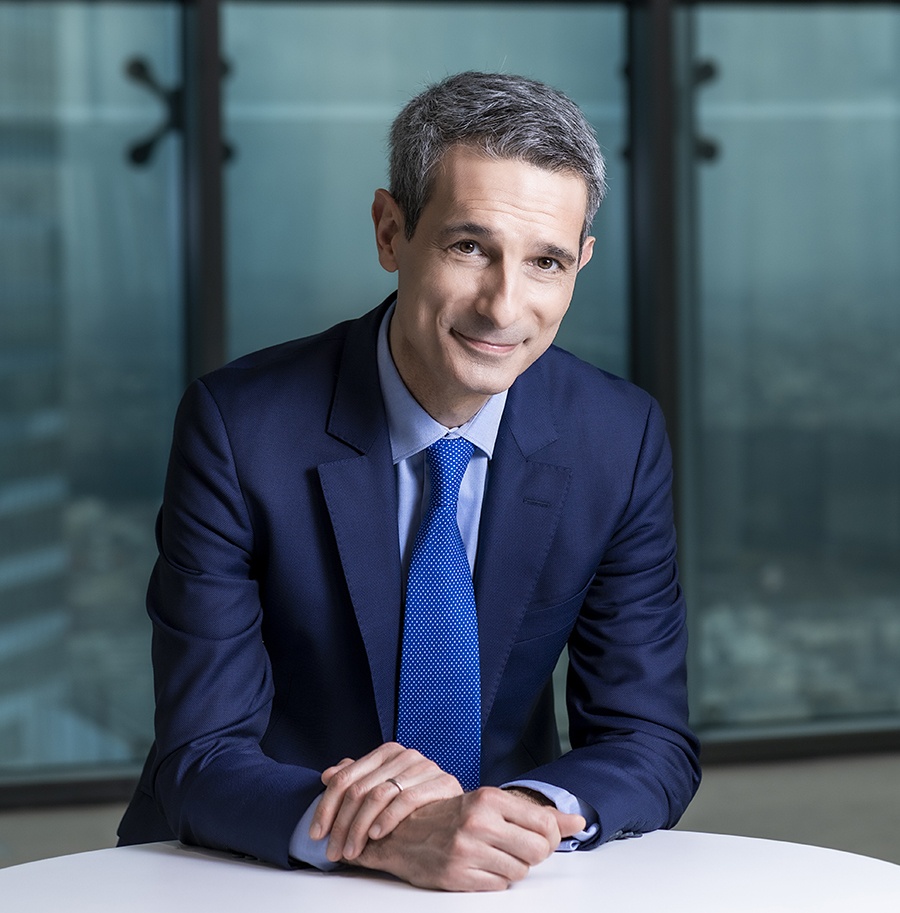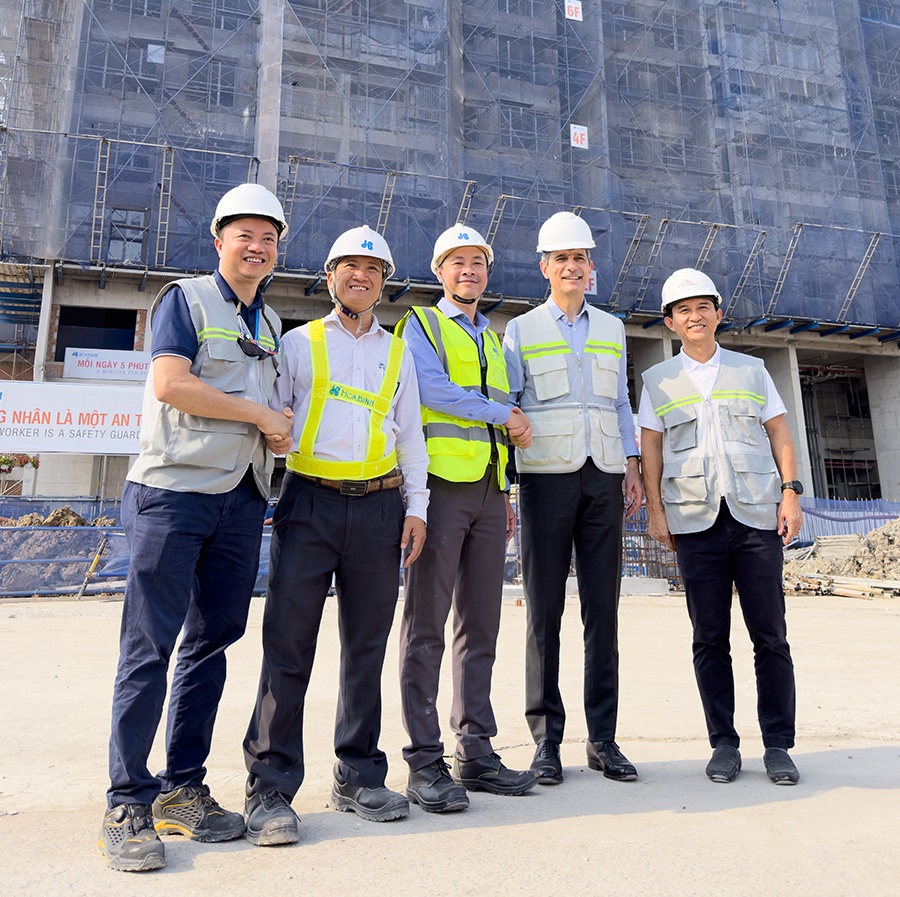Saint-Gobain promotes sustainable construction in Vietnam
What challenges do you see in Vietnam's construction market? And how can Saint-Gobain Group help solve them?
 |
| Benoit Bazin, CEO of Saint-Gobain Group |
We have identified three main challenges. The first is CO2 emissions, with the construction industry contributing roughly 40 per cent. In Vietnam, traditional construction relies heavily on sand, cement, and bricks. Replacing traditional materials like cement with lighter ones, such as gypsum, can greatly reduce weight and emissions.
Second is the preservation of natural resources. Construction takes half of the world's natural resources by volume. Vietnam is facing a scarcity of resources like sand, but if the industry here moves to a specialised crack-resistant plastering solution or plasterboard, it will eliminate much of the demand for sand.
The third challenge we are facing is rapid population growth, which is driving demand for new buildings. Saint-Gobain has long chosen sustainable development as a core business strategy, and we offer a comprehensive range of light and sustainable building materials to meet this growing demand. As a result, buildings that use a range of Saint-Gobain products can help reduce CO2 emissions and create more comfortable, user-friendly living spaces.
How can Vietnam ensure sustainable development in the construction industry?
You need innovation in the circular economy to recycle and reuse materials and move away from carbon-based materials. From 2017 to 2023, Saint-Gobain Vietnam reduced the amount of carbon in its products by 60 per cent.
Regulations are also necessary. For instance, from next year, new buildings must have energy-efficient air conditioning. Saint-Gobain can be a key player in driving this positive shift. As a major global provider of lightweight and sustainable building materials, we can scale up solutions effectively. Our active participation in the World Green Building Council and Vietnam Green Building Council positions us to promote initiatives like material recycling and emissions reduction here, just as we have done in other markets.
We also need to see better communication to educate people about green solutions, green materials, and green buildings, so that they may gain a better understanding of natural resource management.
What are Saint-Gobain's priorities for its 2024 Vietnam strategy?
Vietnam is one of our fastest-growing markets and fits very well into our overall strategy, and last year, Saint-Gobain Vietnam received an award in recognition of the outstanding growth it has seen.
Our company brings value to the local market and communities through our products and solutions, and we are helping Vietnam go green in line with its commitments, such as net-zero by 2050.
 |
| Benoit Bazin, CEO (second from right) and Nguyen Truong Hai (far right), CEO, Saint-Gobain Vietnam visiting a project utilising Saint-Gobain material solutions |
However, one of the greatest obstacles in achieving this target of carbon-neutrality by 2050 for any country is the construction industry, largely due to the high rate of emissions. Saint-Gobain is committed to our processes and to our research and development, on which we spend roughly $600 million every year, into lighter and more environmentally friendly materials.
We are dedicated to sustainable investment in Vietnam, where we have a great team with strong connections to our customers. So far, we have nine plants here with more than 1,000 employees and a profound understanding of the market due to our more than 2,000 tier-2 retailers with more than 10,000 installers skilled in using a wide range of Saint-Gobain's lightweight products. So we want to continue to enrich our understanding and involvement in this market.
 | Green building towards sustainable development The concept of green building is still relatively new to the public and is not properly and fully understood by those working in the field of construction and architecture in Vietnam, according to experts from the latest symposium held on October 4 in Ho Chi Minh City. |
 | Sustainable buildings fit for tomorrow Which hurdles face the construction of buildings that ensure comfort, healthiness, enrichment of local culture, and environmental friendliness? Ton Nu Thanh Mai and Nguyen Hong Nhung from the Vietnam Energy Efficiency Network (EEN-Vietnam) discuss if the construction market in the new normal can accept current supply chain and operations quality. |
 | Building a sustainable world that works for all The demand is growing around the world: for energy, for healthcare, for aviation – even as COVID-19 remains a concern. Growth, of course, is not new; but what is new is our need to meet this demand, while also ensuring these critical sectors are sustainable for the future. |
 | Vietnam climate action: Our roles in building a sustainable business The webinar “Vietnam climate action: Our roles in building a sustainable business” has taken place to debrief Vietnam regulators and business communities on the key results of the 2021 United Nations Climate Change Conference (COP26) and discuss practical solutions on climate actions and sustainable development in Vietnam. |
What the stars mean:
★ Poor ★ ★ Promising ★★★ Good ★★★★ Very good ★★★★★ Exceptional
Themes: Towards Sustainability
Related Contents
Latest News
More News
- CONINCO announces new chairman and CEO (December 10, 2025 | 11:00)
- How AWS is powering the next-gen data era (December 09, 2025 | 13:14)
- Outlook in M&A solid for Singapore (December 08, 2025 | 10:31)
- Vietnamese firms are resetting their strategy for global markets (December 05, 2025 | 17:04)
- LPBank Securities accelerates AI and data innovation with AWS (December 05, 2025 | 09:00)
- Improving traceability capacity with Zebra Technologies (November 26, 2025 | 10:08)
- Ho Chi Minh City engages 500 CEOs in dialogue on building global megacity (November 25, 2025 | 16:00)
- CEO shares insights on Phu My 3 IP’s journey to green industrial growth (November 17, 2025 | 11:53)
- NS BlueScope CEO highlights decade of sustainable steel efforts (November 15, 2025 | 10:00)
- SCG maintains strong cash flow and drives low-carbon growth in Q3 (November 07, 2025 | 09:53)

 Tag:
Tag:


























 Mobile Version
Mobile Version